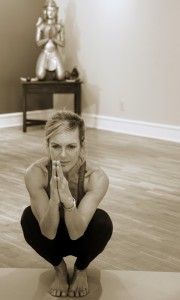
Learning to sit still-how meditation works
If you think you can’t sit still for five minutes and have absolutely no time, you aren’t alone. You might think you can’t add another “to do “list to your day, as modern life is fast- paced and stressful enough already. Sometimes you’re just pissed. So many diversions, like Facebook, or shopping online, steal our precious time. But sitting still, in meditation, can have tremendous benefits for your health and happiness. Stress levels in the US are steadily rising, with over 53% burnout across industries, (even non-profits), now more than ever, according to a Regus Group study. Antidepressants use alone has increased by 400 per cent this last decade. Meditation was once thought of as an esoteric practice, but scientists are showing that it makes you smarter, less anxious, less depressed, and increases resilience and social connection. Better yet, there’s no right or wrong way to meditate. What’s important is the support and empowerment it gives to your day.
Relax a little more
In studies of happiness, says Emma Seppälä, Science Director at Stanford’s Center for Compassion and Altruism Research, Americans are all about high intensity. Happiness is more of the “thrill’ and “excitement “ variety, with little value on calmness-that is, low-intensity positive emotions. For example, if you ask Americans to describe “happiness” they won’t say “inner peace”, says Seppälä.
When we’re stressed or angry, called unpleasant high-intensity negative emotions, we’re more likely to counter with even higher intensity doings-like running, to “ blow off some steam”. We’re more likely to turn to a myriad of distractions. Anything than sitting still. That’s where meditation comes in, as practicing sitting still helps you develop perspective and relax.
We need to take time for ourselves. We all want a purposeful, rich, and diverse world. When you take time for yourself, engage in a purposeful or idle pastime, you become more imaginative and grounded. Giving yourself space for quiet and stillness boosts happiness and encourages a healthy lifestyle. That stillness is why you need to meditate.
How to sit
There are so many ways to meditate, but one of the most profound yet simple ways is to sit tall. Sitting tall though, is really hard for most people. A bad back, inflexibility, or other physical barriers make sitting awfully uncomfortable. Aligning the spine straight and tall has an inherent subtle dynamic. Try these tips to work with posture limitations. Now you’re ready to slide into meditating:
1 .Use a pillow, or folded blankets under your sitting bones, to help tip your pelvis forward. If you don’t know what that feels like, it means your bum is a little higher than your pubis. You can also kneel with one or two yoga blocks underneath your rear, which can feel very comfortable. If you are sitting, your legs can be crossed, or more extended.
Shift your hips back a few times, to make sure you are grounded into the floor beneath you. Wiggle around a bit. Shifting or snuggling your hips back helps your spine be tall. If that isn’t comfortable, you can lean against a wall to support your back. Once you feel more grounded, feel yourself settle down. If you feel you need to just lie down to be comfortable, do it!
- Start to focus on your inhales and exhales. Let your breathing be soft and leisurely, not forced. Be leisurely about it, so you are not rushing.
Imagine your body feeling like Jell-O. When you tap Jell-O gently, it wobbles slightly, teaches yoga master Erich Schiffmann, author of Yoga-The Sprit and Practice of Moving into Stillness. That movement is your breath moving through you. Notice that you are starting to sit quietly, yet the body does have movement going on, and that movement is your breath rippling through you.
4. Stay as relaxed as you can be.
With a little time, patience, and practice, meditation gives back more than you thought possible.


 When you stand tall and lift your chest, don’t you feel much better? You look better also, as your posture improves. Breathing capacity improves, as your diaphragm lifts to help expand your lungs. We need to breathe to live. Breathing sustains us and can also teach us about our current physical and psychological state. You get some great news, hold your breath in anticipation, or exhale out to relax more. Our wavelike breathing is our life force, but did you know that breathing out makes you lose fat?
When you stand tall and lift your chest, don’t you feel much better? You look better also, as your posture improves. Breathing capacity improves, as your diaphragm lifts to help expand your lungs. We need to breathe to live. Breathing sustains us and can also teach us about our current physical and psychological state. You get some great news, hold your breath in anticipation, or exhale out to relax more. Our wavelike breathing is our life force, but did you know that breathing out makes you lose fat?
